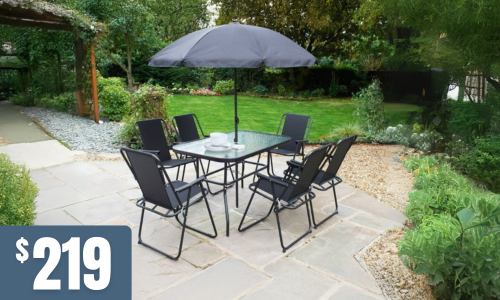Posts tagged with 'proportion'
.jpg) Are you struggling to arrange furniture in your open plan home? While open plan layouts offer a spacious and flexible design, figuring out how to arrange furniture in such a large space can be challenging. Whether you're dealing with a loft-style apartment or a modern home design, here are five tips to help you make the most of your open plan:
Are you struggling to arrange furniture in your open plan home? While open plan layouts offer a spacious and flexible design, figuring out how to arrange furniture in such a large space can be challenging. Whether you're dealing with a loft-style apartment or a modern home design, here are five tips to help you make the most of your open plan:
Define Zones
The key to successfully arranging furniture in an open plan is to define distinct zones within the space. Think about how you want to use each area and create separate zones for activities such as lounging, dining, and working. You can use area rugs, lighting, and furniture arrangement to delineate these zones and create a sense of purpose for each area.
Use Furniture to Create Flow
When arranging furniture in an open plan, it's important to consider the flow of traffic through the space. Arrange furniture in a way that allows for easy movement between different areas of the room. Avoid blocking pathways with large pieces of furniture, and leave enough space between furniture groupings to allow for comfortable movement.
Consider Scale and Proportion
In a large, open space, it's important to choose furniture that is appropriately scaled to the size of the room. Avoid overcrowding the space with oversized furniture, as this can make the room feel smaller and more cluttered. Instead, opt for furniture that is proportionate to the scale of the room and allows for easy circulation.
Create Visual Cohesion
To create visual cohesion in an open plan, choose furniture and decor that complement each other in terms of style, colour, and material. Using a cohesive colour palette throughout the space can help tie everything together and create a unified look. Consider using area rugs, throw pillows, and artwork to add pops of colour and texture that tie the different areas of the room together.
Don't Forget About Functionality
While it's important to create a visually appealing space, it's equally important to consider the functionality of the room. Think about how you and your family will use the space on a daily basis, and choose furniture that meets your needs. For example, if you like to entertain, make sure you have plenty of seating options for guests. If you have children, choose durable, easy-to-clean fabrics that can stand up to everyday wear and tear.
Arranging furniture in an open plan can be challenging, but with the right approach, you can create a stylish and functional space that works for your lifestyle. By defining zones, creating flow, considering scale and proportion, creating visual cohesion, and prioritising functionality, you can make the most of your open plan and create a space that feels inviting and comfortable for you and your family.

When it comes to interior design, furniture placement plays a crucial role in creating a visually pleasing and harmonious space. The arrangement of furniture not only affects the functionality of a room but also significantly impacts its overall aesthetics. Achieving balance and symmetry in furniture arrangements is key to creating a sense of visual harmony. In this article, we will delve into the importance of balance and symmetry, explore different types of balance, and provide practical tips on arranging furniture to create a visually stunning living space.
Understanding the Importance of Balance and Symmetry
Balance and symmetry are fundamental principles in design that create a sense of order, stability, and equilibrium. When applied to furniture placement, they ensure that a room feels cohesive and visually appealing. Without balance and symmetry, a space can appear cluttered, chaotic, or off-balance.
Balance refers to the distribution of visual weight in a room. Achieving balance involves arranging furniture and decor elements in a way that creates equilibrium and visual stability. Symmetry, on the other hand, involves mirroring objects or arranging them in a way that creates a sense of harmonious proportion.
Exploring Different Types of Balance
There are various types of balance that can be employed in furniture arrangements, each with its own unique aesthetic impact. Understanding these types will help you choose the most suitable balance for your desired style.
- Symmetrical Balance: Symmetrical balance is achieved by placing identical or similar objects in a mirrored arrangement. This type of balance is often associated with a formal and traditional aesthetic. For instance, a sofa flanked by two identical armchairs or a bed with matching nightstands on either side creates a symmetrical balance.
- Asymmetrical Balance: Asymmetrical balance involves arranging objects of different visual weight or size to create equilibrium. It can be achieved by distributing objects with varying heights, textures, or colors across a space. Asymmetrical balance allows for a more relaxed and informal look, adding visual interest and uniqueness to a room.
- Radial Balance: Radial balance is centered around a focal point, with objects radiating outward in a circular or spiral arrangement. This type of balance is often seen in rooms with a central point of focus, such as a dining table surrounded by chairs or a coffee table with seating arranged around it. Radial balance adds a dynamic and energetic feel to a space.
Practical Tips for Achieving Visual Harmony
Now that we have explored the importance of balance and symmetry, let's delve into some practical tips for arranging furniture to create a visually pleasing and harmonious space.
- Plan the layout: Before moving any furniture, create a rough sketch or use a digital tool to plan the layout of the room. Consider the size and shape of the space, as well as the function and flow you want to achieve.
- Start with the focal point: Identify the focal point of the room, such as a fireplace, large window, or entertainment center. Arrange furniture around this focal point to create a sense of cohesion and visual hierarchy.
- Consider traffic flow: Ensure that there is enough space for comfortable movement within the room. Leave clear pathways and avoid placing furniture in a way that obstructs the natural flow of traffic.
- Mix and match: Experiment with a combination of different balance types. For instance, you can place a large, visually heavy piece of furniture on one side of the room and balance it out with a group of smaller objects on the other side.
- Pay attention to scale and proportion: Ensure that the size of the furniture is appropriate for the space. Avoid overcrowding or leaving vast empty areas. Aim for a harmonious balance between furniture sizes to maintain a visually pleasing environment.
- Play with heights: Vary the heights of furniture and accessories to add visual interest. Mix taller pieces, such as bookshelves or floor lamps, with lower items like sofas or coffee tables. This creates a sense of vertical balance and prevents the room from feeling flat or monotonous.
- Consider color and pattern: Incorporate color and pattern in a balanced way. Choose a color palette that complements the overall style of the room and distribute it evenly throughout the space. When using patterns, ensure that they are proportionate and not overwhelming. A balanced distribution of color and pattern helps create a cohesive and visually pleasing atmosphere.
- Pay attention to negative space: Negative space, also known as empty or white space, is an essential element in creating balance. Allow for some empty areas within the room to give the eyes a place to rest. This helps prevent the space from feeling overcrowded and allows the furniture and decor elements to stand out.
- Experiment with furniture angles: Don't be afraid to angle furniture pieces slightly to add a dynamic touch to the room. Angled arrangements can create a sense of movement and energy while maintaining balance and symmetry.
- Use mirrors strategically: Mirrors not only serve a functional purpose but can also enhance the visual balance in a room. Placing a mirror opposite a window or focal point reflects light and creates a sense of spaciousness. Mirrors can also be used to visually balance asymmetrical arrangements by creating a mirrored effect.
- Edit and declutter: Regularly assess your furniture arrangement and remove any unnecessary or visually distracting items. Clutter disrupts visual harmony and can make a room feel chaotic. Streamline the space by keeping only essential pieces that contribute to the overall balance and symmetry.
Remember, achieving visual harmony in furniture arrangements is a creative process that requires experimentation and a keen eye for detail. Trust your instincts and have fun while arranging your furniture to create a space that reflects your personal style while maintaining a sense of balance and symmetry.




.jpeg)

.jpeg)
 (3).jpeg)
